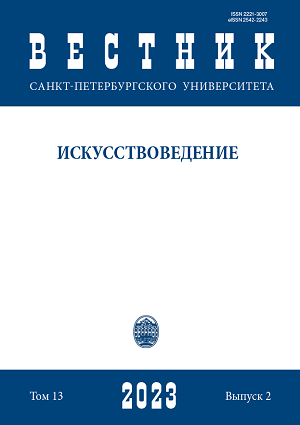New Perspectives on Studying Art of the Baltic Region in the 10th–12th Centuries: The Issue of Artistic Interaction between Scandinavia and Ancient Rus’
DOI:
https://doi.org/10.21638/spbu15.2023.209Abstract
The aim of this research is to study the development of Scandinavian art outside of Scandinavia. The main attention is focused on the process of influence of the Borre style elementon the applied art development in North-West Russia of the 10th–12th centuries. The main sources of artistical influence should be not Scandinavia, but the territory of distribution of Scandinavian art, in particular, Pomerania and the British Isles. The stylistic analysis revelates the use of identical elements of decor, where the main place have the highly simplified Borre style motifs (chains and scale motifs), supplemented by a double contour and hatching. It is possible to trace the process of Borre’s assimilation using carved wooden artefacts from Novgorod the Great. Development of this art in the 10th century was influenced by the art of Viking Age. The preservation of these stylistic features can be traced in Novgorod art up to and including the 12th century. One of the actual problems of this phenomenon is the analysis of the decorative schemes and the appearance of the main visual elements.
Keywords:
Scandinavian art, art of Ancient Rus’, applied art, Novgorod the Great, Slavs and Scandinavian, Viking Age in the Medival Rus’, Pomeranian art, art and archaeology
Downloads
References
Downloads
Published
How to Cite
Issue
Section
License
Articles of "Vestnik of Saint Petersburg University. Arts" are open access distributed under the terms of the License Agreement with Saint Petersburg State University, which permits to the authors unrestricted distribution and self-archiving free of charge.






